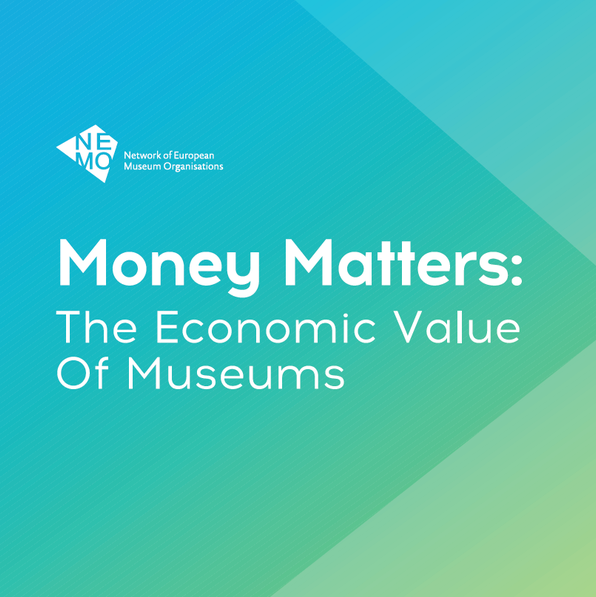posted on
30 Mar 2017
The Economic Value of Museums | NEMO publication

With "Money Matters: The Economic Value of Museums" NEMO (Network of European Museum Organisations) follows up on its November 2016 conference. The articles in this publication introduce and discuss spill-over effects, innovative business models and cooperation strategies for museums and their economies.
The question of how to value cultural institutions and activities has been central to the cultural debate for many years.
How are cultural institutions and activities being valued?
Many different approaches, criterions and measurements - quantitative as well as qualitative - have evolved over the years. One of them being the economic value.
The economic value of museums was the theme of the 2016 Annual Conference of NEMO, the Network of European Museum Organisations, and it is the focus of its new publication Money Matters: The Economic Value of Museums.
Museums are integrated into the economic world, but come with certain and unique specifics and layers. They are a part of the leisure society, but cannot be compared to theme parks. They have an impact on tourism, but are not simply marketing instruments for a region or a city. They create work and wealth, but not in the same way as private companies.
Money Matters: The Economic Value of Museums stems from this standpoint and provides perspectives from the cultural and economic sector on value measurement, profitability, partnerships and cooperation, financial strategies and business models, and the various spill-over effects.
NEMO, The Network of European Museum Organisations, believes and works to demonstrate that museums have an important economic value – in addition to the value of their collections (and the accessibility thereof), in addition to their social value (and the impact museums have on social cohesion) and in addition to their educational value (how museums inspire, engage and explain the world). The herein introduced examples from different European countries show the shared challenges and opportunities and serve as important reminders of the significant role museums play in the process of cultural diversity and the free exchange of knowledge, thus inspiring creativity and innovation. As well as their influences on many different levels, i.e. in the tourism sector or urban and regional planning.
More publications from NEMO
Similar content
posted on
19 Mar 2017
posted on
22 Jul 2016
posted on
05 Sep 2016
posted on
14 Jul 2018
posted on
12 Oct 2023
posted on
18 Sep 2018


